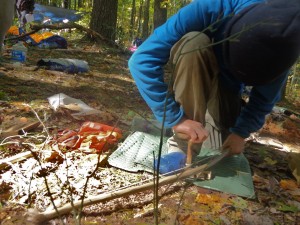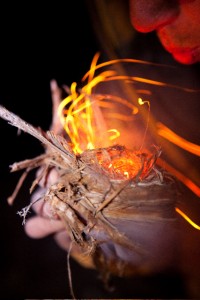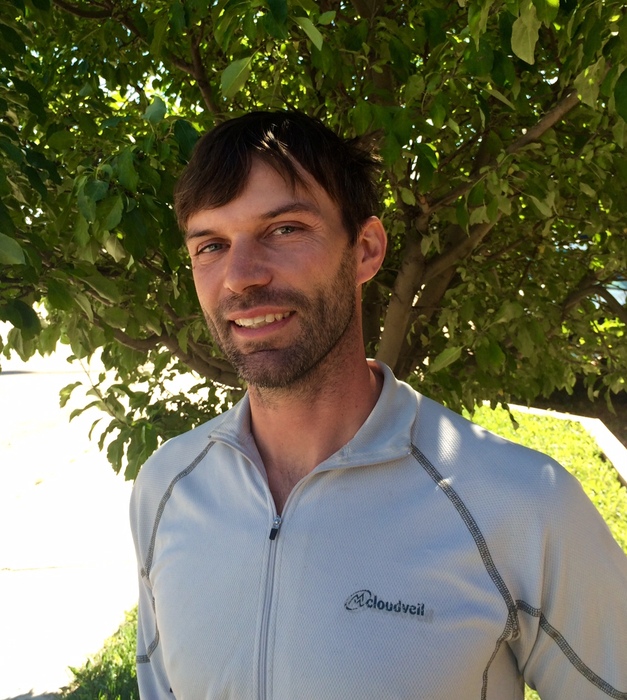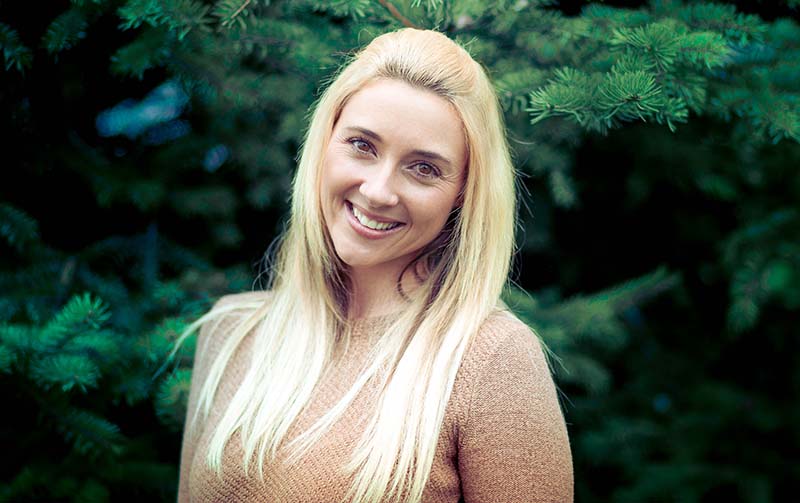July 22, 2016
The Bow Drill Fire: Nature’s Rorschach Test

“What does making fire with sticks have to do with therapy?!” It’s one of the most common questions students ask early in their stay at Second Nature. The answer, of course, is “Everything.”
But first some background:
Making bow drill fires (or “busting” as it is referred to in the field) is one of the most integral activities that we do at Second Nature. People often picture the scene from Castaway when Tom Hanks rubs two sticks together to create fire. Although they took a few poetic liberties, the basic concept isn’t that far off (the bow drill technique is a bit different, but the basic concept is essentially the same.)
The practical rationale for using bow drills to make fire is pretty simple. We use fire for just about everything in the field. It cooks our dinner, keeps us warm, heats up water for bathing, gives us light in the evening, and provides a calming centerpiece to host therapy groups. And, as important as fire is to the health and safety of the group, the last thing we want is to have to rely on lighters, matches, or other technology that may fail or get lost. The beauty of bow drilling is that all of the materials you need are right there and ready to be utilized. If one part of the bow drill set is lost, just find a sage bush and you’re ready to harvest another one!
The therapeuti c benefit of bow drilling is where things get interesting. The truth is, bow drilling is difficult, and completely foreign to just about everyone when they first arrive at Second Nature. But as we rely on bow drilling to make fire, everyone must learn how to “bust” since each student is part of the group and it is important for everyone to contribute. Because it is a novel and difficult activity, the personality and dynamics of each individual tend to rise to the surface when attempting this task. Students with poor frustration tolerance? You’ll see it emerge quickly at the first failed attempt. Avoidance and procrastination issues? They suddenly appear once it’s busting time. The same applies to dynamics surrounding self-esteem and insecurity, competitiveness, entitlement, anxiety, and just about every other therapeutic issue. And the beauty in this is that it doesn’t feel like “therapy,” so even students who are guarded or prone to being “all talk” will show their core patterns when learning to bow drill. The therapeutic value comes from being able to highlight these patterns when they emerge and process through these dynamics with the students. It may take the form of problem solving, learning emotional regulation skills, or working on positive self-talk techniques, but it all stems from the in-the-moment experiential process that bow drilling provides. It is the intentional utilization of that experience which transforms busting from simply a “camping skill” into a therapeutic process. Under the guidance and direction of the therapist, the field counselors seek out those opportunities to connect the dynamics emerging for a student as he or she learns how to bow drill to those broader individual treatment issues. In this context, the bow drill experience becomes a powerful catalyst for deeper therapeutic work.
c benefit of bow drilling is where things get interesting. The truth is, bow drilling is difficult, and completely foreign to just about everyone when they first arrive at Second Nature. But as we rely on bow drilling to make fire, everyone must learn how to “bust” since each student is part of the group and it is important for everyone to contribute. Because it is a novel and difficult activity, the personality and dynamics of each individual tend to rise to the surface when attempting this task. Students with poor frustration tolerance? You’ll see it emerge quickly at the first failed attempt. Avoidance and procrastination issues? They suddenly appear once it’s busting time. The same applies to dynamics surrounding self-esteem and insecurity, competitiveness, entitlement, anxiety, and just about every other therapeutic issue. And the beauty in this is that it doesn’t feel like “therapy,” so even students who are guarded or prone to being “all talk” will show their core patterns when learning to bow drill. The therapeutic value comes from being able to highlight these patterns when they emerge and process through these dynamics with the students. It may take the form of problem solving, learning emotional regulation skills, or working on positive self-talk techniques, but it all stems from the in-the-moment experiential process that bow drilling provides. It is the intentional utilization of that experience which transforms busting from simply a “camping skill” into a therapeutic process. Under the guidance and direction of the therapist, the field counselors seek out those opportunities to connect the dynamics emerging for a student as he or she learns how to bow drill to those broader individual treatment issues. In this context, the bow drill experience becomes a powerful catalyst for deeper therapeutic work.
 The process of making fire by bow drill is also rich with metaphor and practical lessons that are unmatched by any other single activity that happens in wilderness or a residential setting. Success in bow drilling requires practice, patience, and persistence. It entails multiple parts of the busting set, all of which are important and if any one piece is not in good working order then no amount of effort will produce a flame. It requires thoughtful preparation (jumping into the task impulsively without adequately preparing the set will produce a lot of smoke but no fire.) To our students, fire by bow drill initially seems impossible, but once the components are in place just about anyone can achieve success, regardless of age, gender, size, or athletic ability. That moment when everything just “clicks” for a student and he/she achieves a first flame is truly inspiring. There is the typical pride and excitement that comes from finding success at something challenging, but something much more profound happens as well, and that moment is when the therapeutic groundwork starts to take shape. Students begin to internalize what, up to that point, they discounted as idle adult lecturing and instead see the value themselves—lessons about resilience and persisting through challenges, connections between their experience in the field and the dysfunctional patterns at home, and the belief that with effort and motivation they can find success and contentment. It’s a pretty magical process for something as simple as “rubbing two sticks together.”
The process of making fire by bow drill is also rich with metaphor and practical lessons that are unmatched by any other single activity that happens in wilderness or a residential setting. Success in bow drilling requires practice, patience, and persistence. It entails multiple parts of the busting set, all of which are important and if any one piece is not in good working order then no amount of effort will produce a flame. It requires thoughtful preparation (jumping into the task impulsively without adequately preparing the set will produce a lot of smoke but no fire.) To our students, fire by bow drill initially seems impossible, but once the components are in place just about anyone can achieve success, regardless of age, gender, size, or athletic ability. That moment when everything just “clicks” for a student and he/she achieves a first flame is truly inspiring. There is the typical pride and excitement that comes from finding success at something challenging, but something much more profound happens as well, and that moment is when the therapeutic groundwork starts to take shape. Students begin to internalize what, up to that point, they discounted as idle adult lecturing and instead see the value themselves—lessons about resilience and persisting through challenges, connections between their experience in the field and the dysfunctional patterns at home, and the belief that with effort and motivation they can find success and contentment. It’s a pretty magical process for something as simple as “rubbing two sticks together.”



